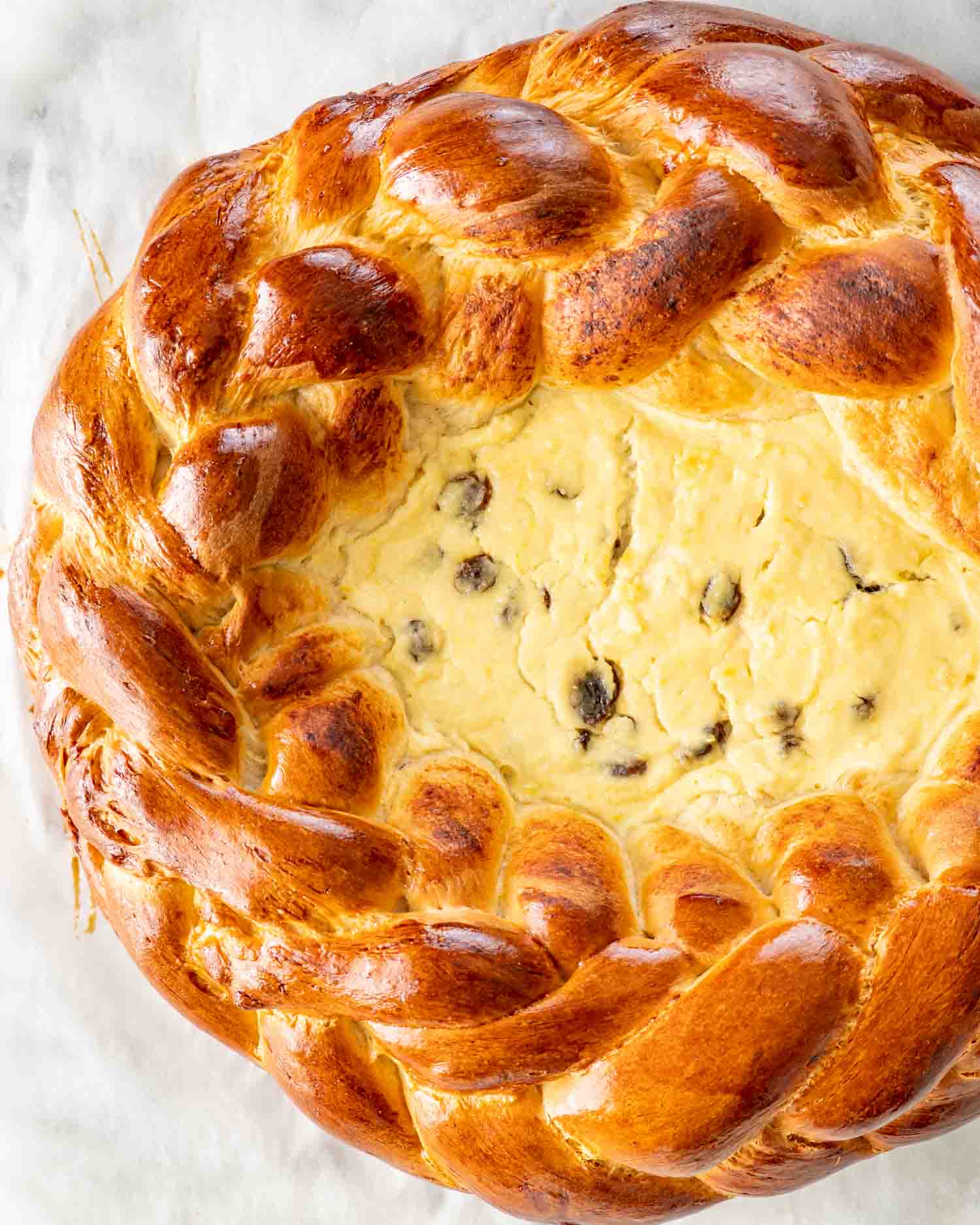

# The Joy of Easter Bread: A Tribute to Taste and Heritage
Easter bread is a cherished custom across various cultures, symbolizing the onset of spring and the joy of new beginnings. This tender and rich dough, often enhanced with citrus notes, elevates simple ingredients into a spectacular golden loaf embellished with vibrant, ornamental eggs. Whether part of a celebratory feast or savored as a sweet indulgence, Easter bread is a charming complement to any Easter observance.
## What Exactly is Easter Bread?
Easter bread is a sweet, yeast-driven loaf that is commonly braided and frequently includes colorful eggs nestled within its body. The braiding not only adds visual charm but also holds symbolic significance, representing the Holy Trinity in Christian faith. The bread can take various shapes, such as a circle, a cross, or a straightforward log, providing a versatile focal point for Easter celebrations.
### Main Attributes of Easter Bread
– **Taste**: Lush, buttery, and tender, Easter bread evokes sweet brioche or challah, with delightful hints of citrus zest that enrich its flavor profile.
– **Skill Level**: This recipe is accessible for bakers at any experience level, featuring basic steps that are easy to follow. Braiding the dough offers a fun and engaging activity for families.
– **Technique**: The dough can be fashioned into a braid or a round loaf, allowing for creativity in the presentation.
– **Preparation Note**: For optimal results, dye the eggs in advance, making sure they are completely dry before incorporating them into the shaped dough.
## Ingredient Suggestions for Easter Bread
Crafting the ideal Easter bread necessitates a focus on ingredient quality:
– **Dough**: Use fresh eggs, real butter, and whole milk to create a rich and airy texture.
– **Flour**: All-purpose flour is advisable for this recipe, as it has not been tested with other types.
– **Yeast**: Active dry yeast is utilized to encourage the dough to rise.
– **Eggs**: Large eggs are perfect for the dough, while smaller ones can be reserved for decoration. Dyeing the eggs is optional but adds a festive flair to the finished product.
## Optional Glaze
For an added touch of sweetness, think about applying a glaze. Combine 1 cup of powdered sugar with 2 tablespoons of milk and drizzle it over the cooled bread for an attractive finish.
## How to Dye Eggs
Dyeing eggs is an enjoyable task that can be completed beforehand. To make a simple dye solution, combine ⅔ cup of water with 1 ½ teaspoons of white vinegar. Add food coloring to create your preferred shade, and let the eggs sit until they achieve the desired color. Ensure the dyed eggs are thoroughly dried before using them in the dough.
## Best Practices for Making Easter Bread
1. **Room Temperature Ingredients**: Keeping milk and eggs at room temperature will aid in activating the yeast and enable a better rise.
2. **Dye Leakage**: Don’t fret if some dye seeps into the dough; it will not compromise the flavor.
3. **Kneading**: A stand mixer with a dough hook is especially handy for kneading, although you can also knead by hand until the dough is smooth.
## Storing Easter Bread
To keep leftover Easter bread (without the eggs), cover it and store it at room temperature for up to four days. Enjoy slices as they are or use them to create delectable French toast casserole or bread pudding. If you have extra eggs, they can be kept in the refrigerator for up to four days.
## Conclusion
Easter bread is more than simply a delightful indulgence; it captures the essence of the season, uniting families in celebration. With its rich taste and beautiful appearance, this bread is sure to become a beloved tradition in your home. Whether you bake it for a festive occasion or just to share with loved ones, Easter bread is a scrumptious way to celebrate spring and the thrill of new beginnings.
Did you relish this Easter bread recipe? Please leave a comment and a rating below!